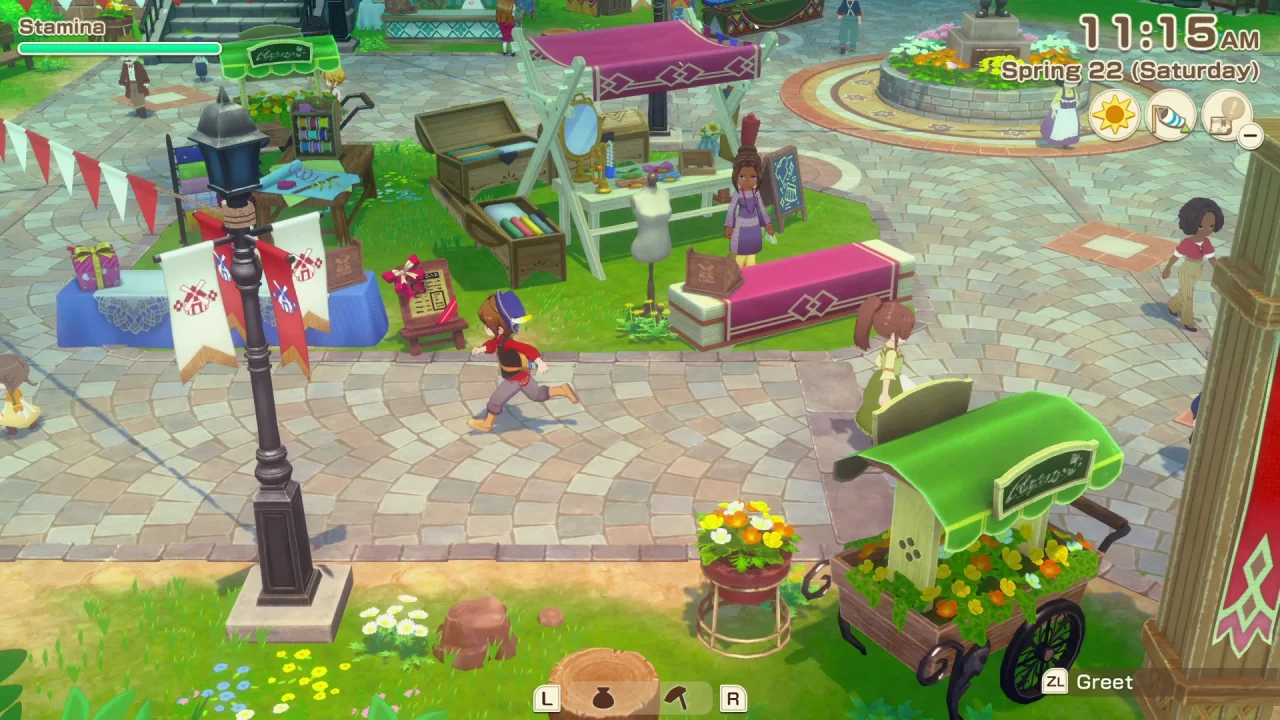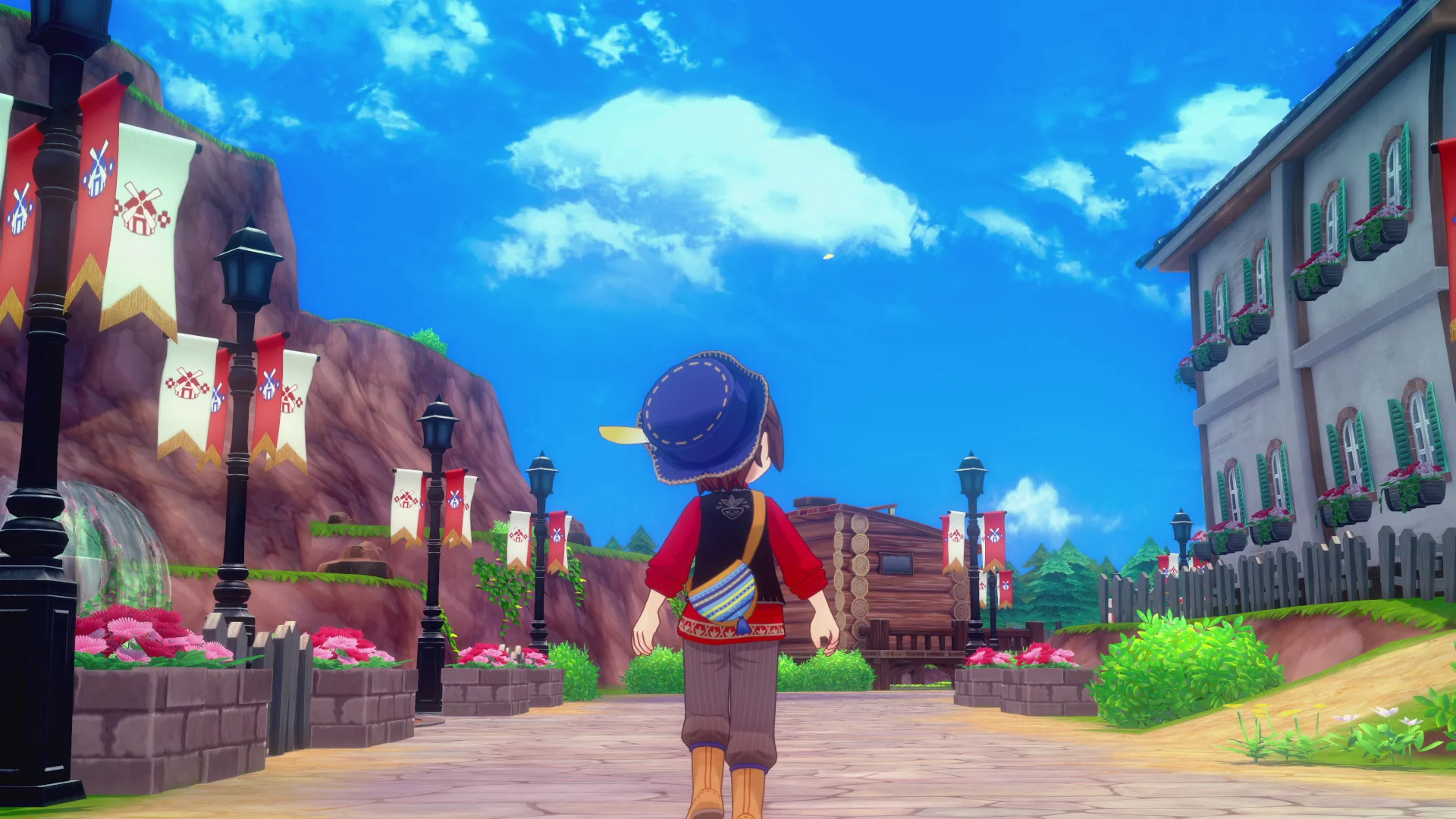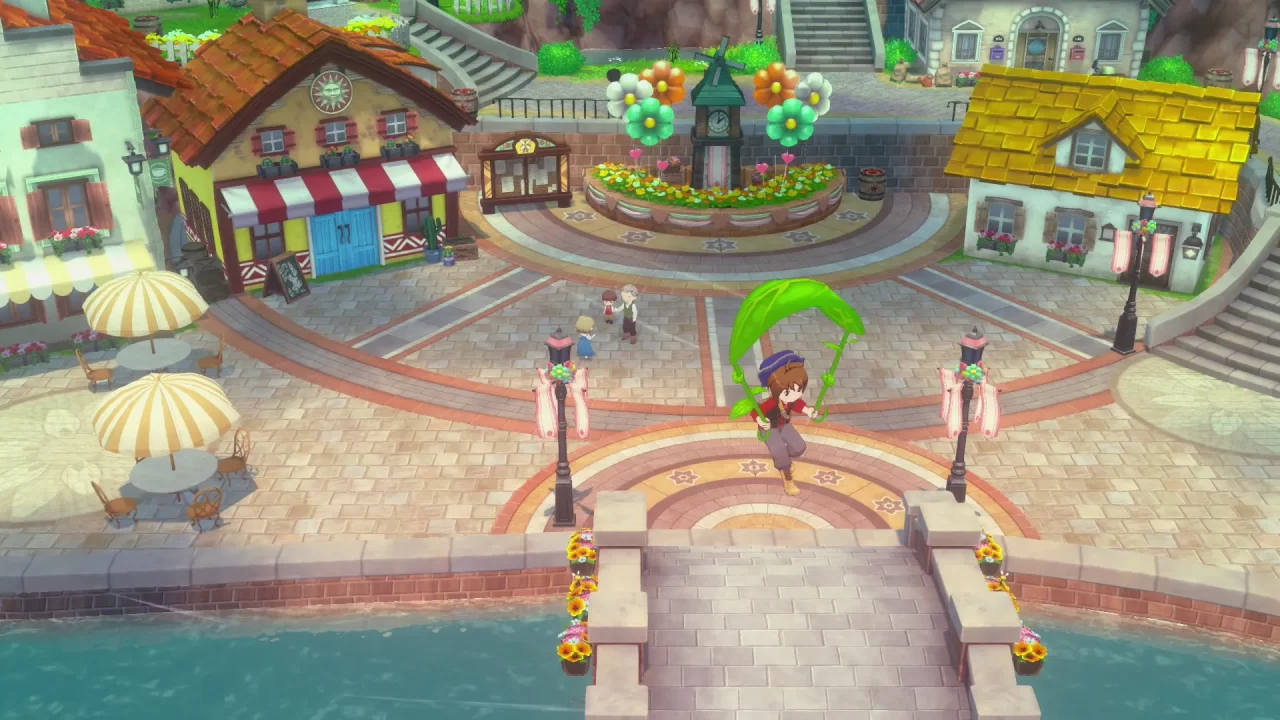When Marvelous announced the next Story of Seasons title would be a remake of Harvest Moon Grand Bazaar, I was pretty surprised. Previous remakes Story of Seasons: Friends of Mineral Town and Story of Seasons: A Wonderful Life revisited beloved classics that the fan community holds up as pinnacles of the series. Grand Bazaar, on the other hand, is one of the most forgotten games in the entire series. I have vaguely fond memories of the game from back in 2010, but it didn’t leave a lasting impression on me as much as the other entries on the Nintendo DS. After spending about ten hours playing through the first month of the remake, that apprehension melted away, and I’m pleased to say that Story of Seasons: Grand Bazaar is the most fun I’ve had with the series in years.
Story of Seasons: Grand Bazaar begins with the player arriving in Zephyr Town, the site of a once world-renowned Bazaar that has since fallen on hard times. Felix, the brawny and boisterous town mayor, quickly teaches the player the basics of running a shop stall in the Bazaar, then whisks them away to the local farm to begin their journey helping the town regain its lost prestige. Leading with the shop management gameplay of the Bazaar rather than the farming aspects is a wise choice, as although players will spend more in-game time farming, most of the game’s progression revolves around the weekly Bazaar.

Unlike past Story of Seasons titles, there is no shipping box here; the player must cultivate a wide assortment of crops and other goods during the week in preparation for what is essentially a massive, town-wide farmers market that draws crowds from all over. The shop management gameplay is fast and frenetic, providing a nice contrast to the slower-paced farming and socializing during the rest of the week, and adds a strategic layer to decisions about what the player’s farm should grow each week. Simply cultivating the single most valuable crop isn’t sufficient to make a hefty profit; visitors demand a wide selection of items, and more variety means more interested shoppers. It may sound like a small change, but the titular Grand Bazaar ends up defining the game and adds such a unique and satisfying wrinkle to the otherwise tried-and-true farming life gameplay.
The first major improvement I noticed when starting my first Spring in Zephyr Town is how upgrades in the presentation make the game feel lively and vibrant. While the squat sprites of the original DS release have their charm, the developers have done an excellent job adapting the original character designs to the softer, more realistically proportioned character models and portraits of the modern Story of Seasons titles. Chief among these improvements are the story and event scenes, which are now fully voice-acted. So much more personality comes through in these character interactions now, like the booming, energetic voice of Mayor Felix motivating you to do your best, or the husky, disinterested tone June exudes. The characters display a wide variety of facial expressions and animations, all of which convey the emotion and identity of each resident in ways that the original 2D character portraits simply can’t match.
This increase in visual fidelity applies to the environments as much as it does to the characters. Moving to a fully 3D world has allowed the devs to lean into some of the best aspects of the original title. Harvest Moon Grand Bazaar was the first title in the series to introduce jumping, but it always felt a bit floaty and imprecise. In Story of Seasons: Grand Bazaar, the feeling of jumping and just generally moving around in the environment feels much more fluid and responsive due to improved physics and animation quality. Wind is the defining feature of Zephyr Town, and to capitalize on this, the developers added a glider that the player can use to get around quickly. The weather varies from day to day, and players can gauge the force of the wind from a meter in the game’s UI and visually from how the wind buffets the trees and flows through the grass. After a while, I found myself effortlessly judging the speed and angle of the wind from observing the environment around me, a sense of immersion that the original just couldn’t deliver.
The biggest change I’ve noticed in these initial few hours is the inclusion of the Nature Sprites. In previous games, these fae creatures assisted the player with farming tasks, but in Story of Seasons: Grand Bazaar, they serve a greater purpose. Each Nature Sprite corresponds to a different type of foraging item (plants, fish, bugs, mushrooms, etc.), and delivering these foraged goods to the Sprites will cause them to improve the quality of foraged items. All actions in the game reward you with Happy Points, and you can use these points to purchase upgrades and items from the Sprites in their secret shop during the Bazaar. As you sell items in the Bazaar, you will raise a Cheer Time meter with each Sprite. Once full, you can call in the Sprites to help you hawk your wares, providing bonuses and quickly running through your stock of items. This system replaces the clunky reputation and customer question system from the original game, and it better fits the frantic pace of the shopkeeping gameplay.
It’s rare for a game in such a long-running series to surprise me, and even rarer still for a remake to manage that feat. The developers at Marvelous knew what they were doing when they plucked Story of Seasons: Grand Bazaar out of relative obscurity in the Story of Seasons timeline for a remake, because revisiting this entry with a fresh coat of paint and some quality-of-life additions has opened my eyes to how genius the core concept truly is. The added layer of strategy and planning from managing a shop in addition to the farm has spruced up the core gameplay loop such that I can easily see myself losing dozens of hours and loving every second of it.
Story of Seasons: Grand Bazaar releases August 27th, 2025 for Nintendo Switch, Switch 2, and Windows via Steam. Look for our review around that time!






Leave a Reply
You must be logged in to post a comment.